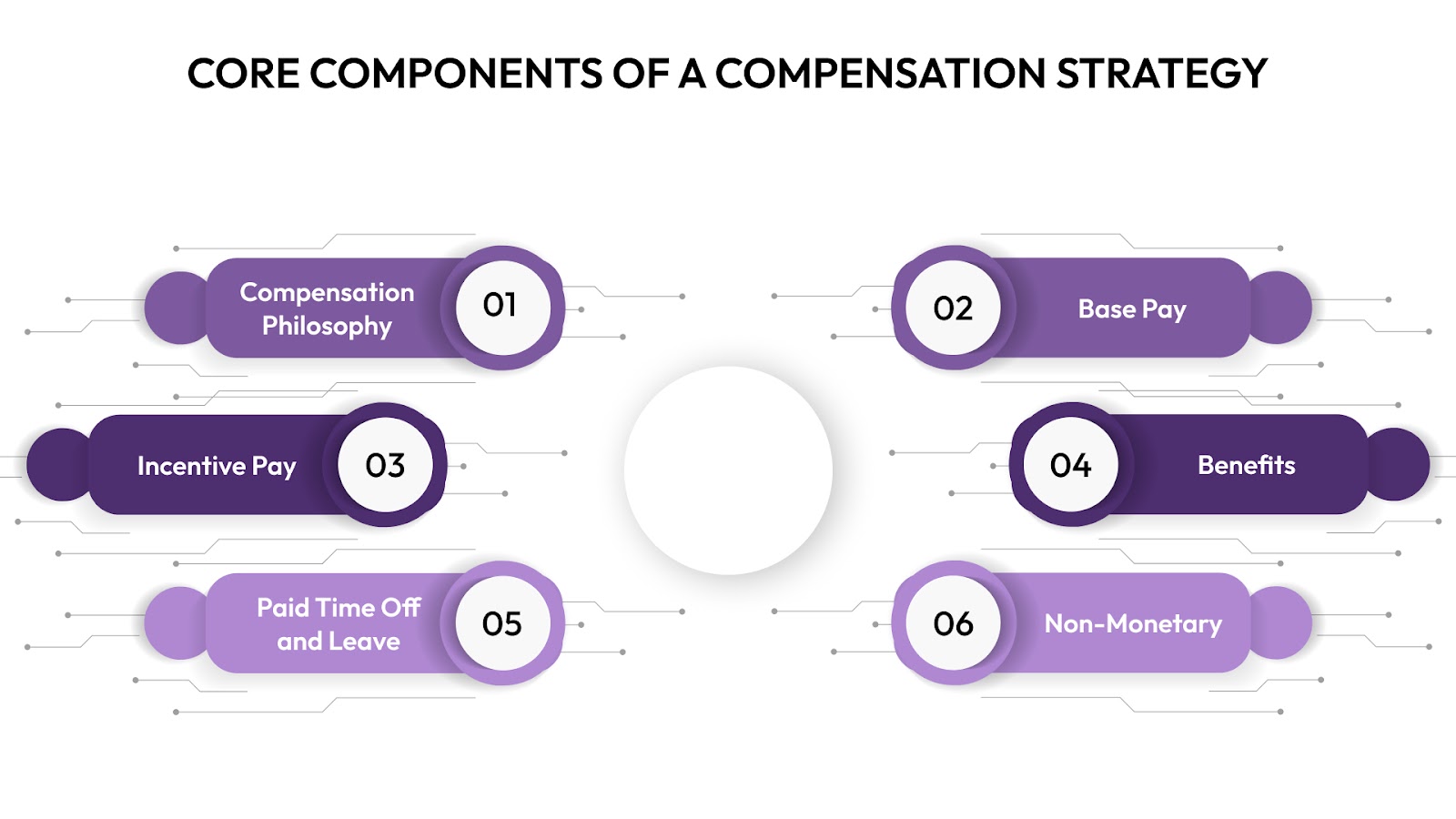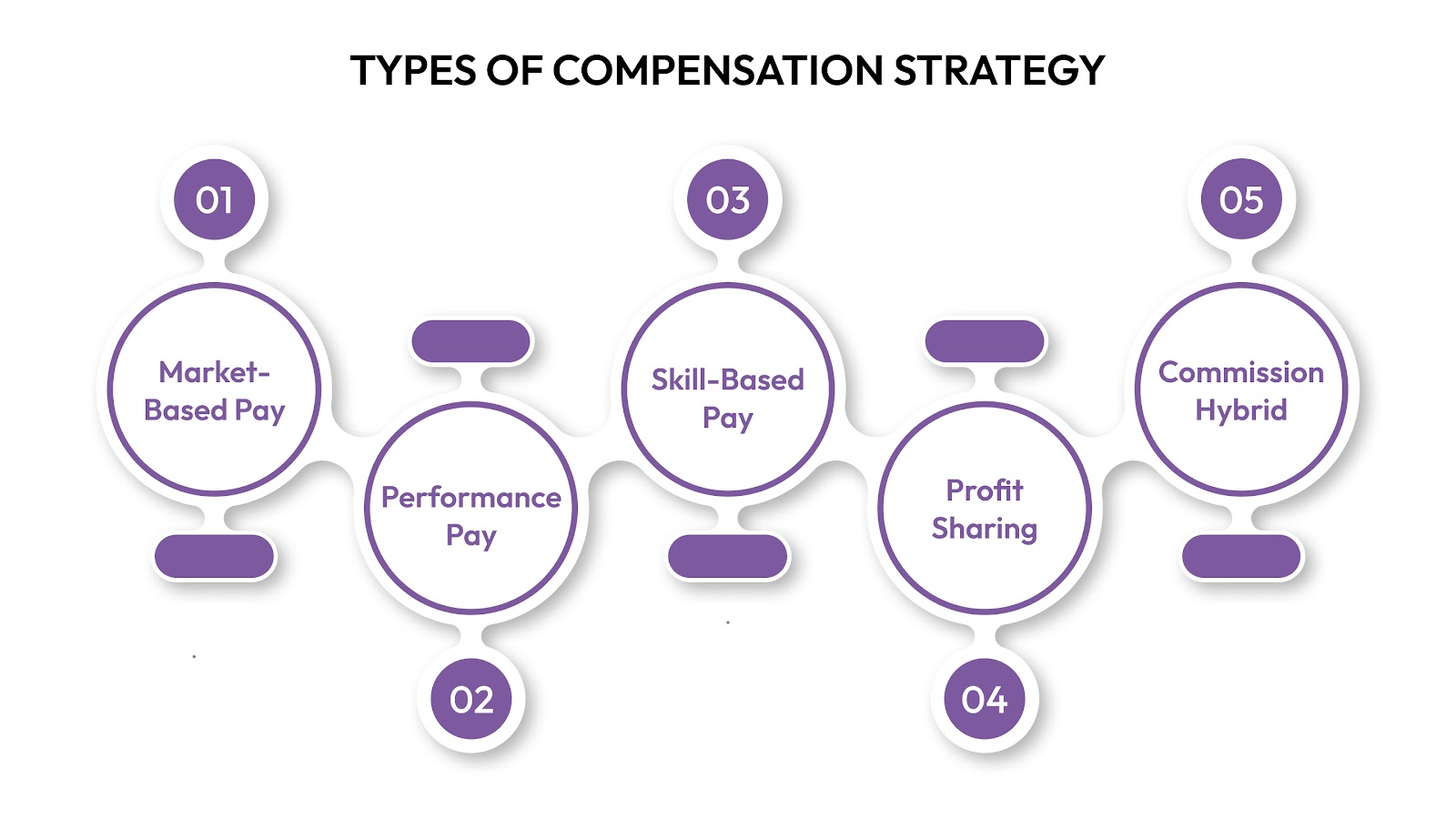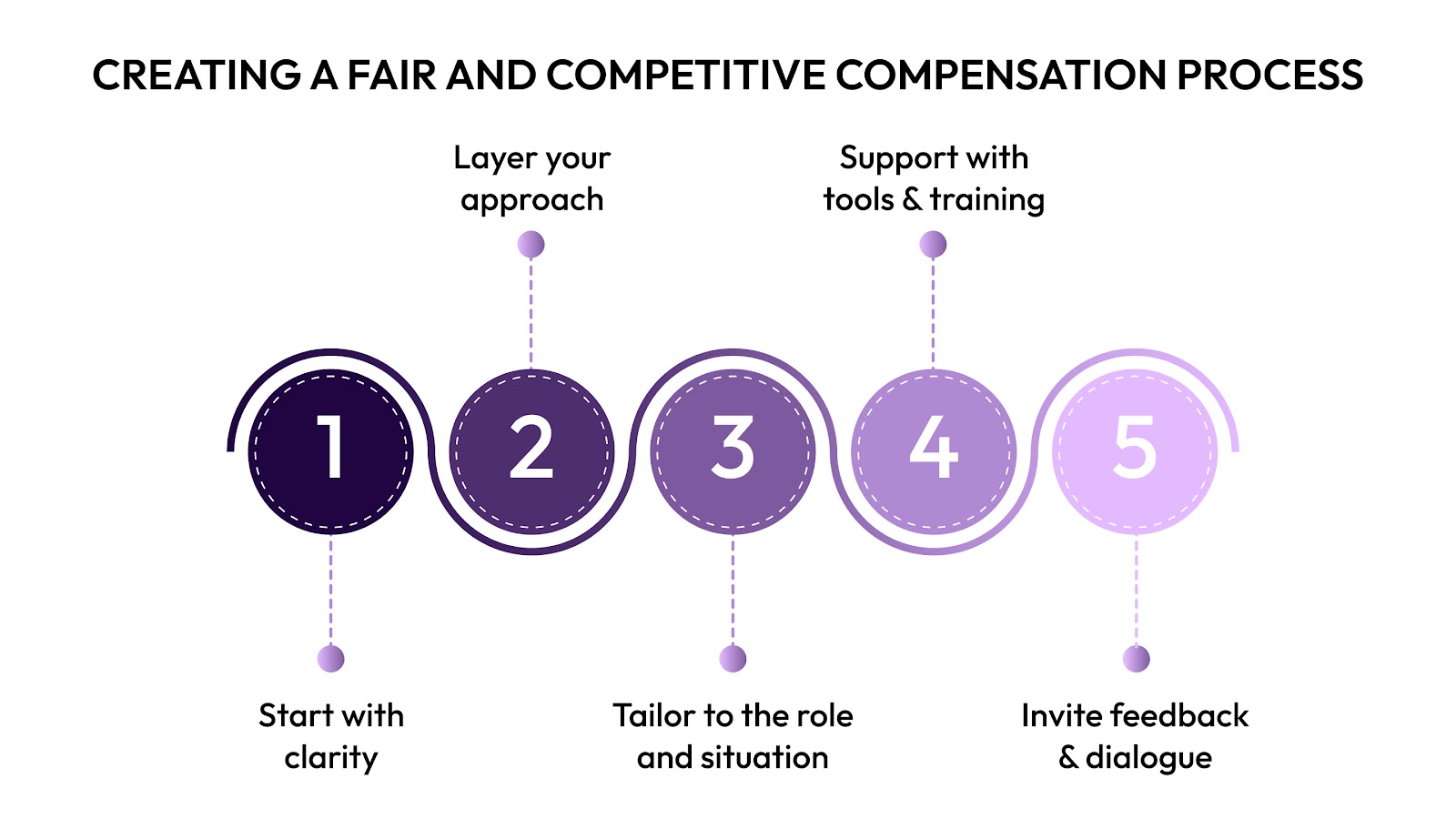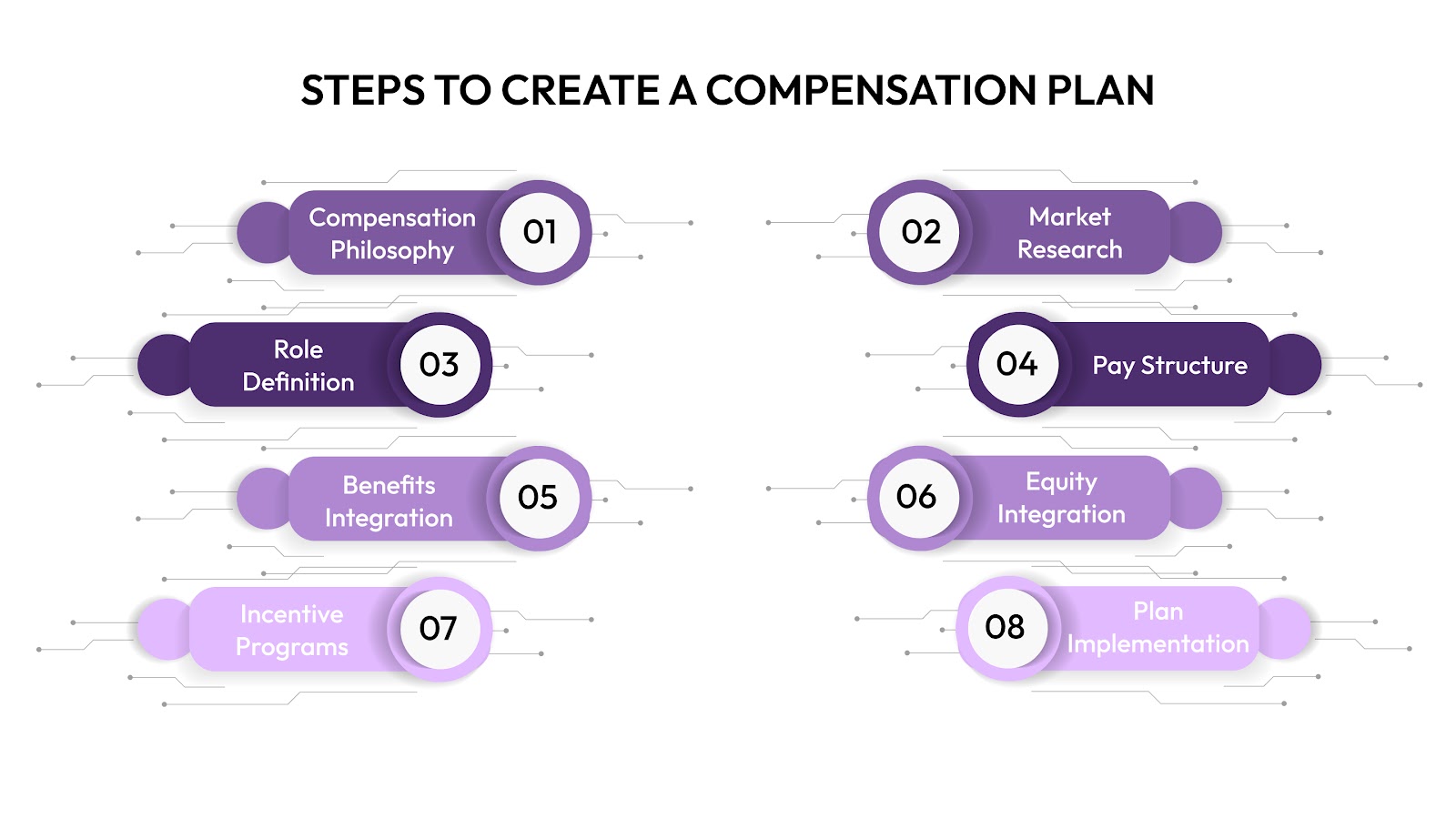How to Develop a Comprehensive Compensation Strategy: Practical Guide
Build a comprehensive compensation strategy with confidence. Learn proven techniques, avoid pitfalls, and create a balanced, effective rewards plan.

TL;DR
- A comprehensive compensation strategy covers more than base pay—it blends salary, incentives, benefits, and perks into a total rewards package tailored to your organization.
- Align your pay practices with business goals, industry benchmarks, and internal values to attract and retain top talent.
- Regular audits, clear communication, and transparent frameworks foster trust, motivate teams, and minimize risk.
- Ongoing evaluation ensures your compensation stays competitive and compliant in a changing market.
- Modern platforms like CandorIQ streamline benchmarking, pay program design, and strategy refreshes for continuous improvement.
Imagine if your favorite streaming service suddenly erased all your saved shows without warning or if your bank rearranged your account balances overnight. You’d feel shocked, maybe lose trust. That’s exactly how employees experience compensation changes when organizations handle them without transparency or context. Today, salary data is public, peer pay comparisons travel fast, and talent can move companies with a click. How you communicate pay matters as much as the pay itself.
A comprehensive compensation strategy goes beyond salaries, it reflects what your organization values, how you compete for talent, and your commitment to fairness and clarity. Too many companies treat compensation reviews as routine tasks, missing the chance to boost culture, retain top talent, and build trust.
This guide is for forward-thinking People and Finance leaders. Whether launching incentives, adjusting pay bands, or responding to market shifts, it offers practical advice to build transparent, strategic compensation programs that work.
What Is a Comprehensive Compensation Strategy?
A comprehensive compensation strategy is a clear plan that defines how your organization rewards employees beyond just base pay. It combines salary, bonuses, benefits, and perks into one aligned approach that fits your company’s culture, goals, and market position. This strategy ensures fairness internally and competitiveness externally by using market data, transparent salary bands, and performance-driven rewards.
It helps attract and retain talent while managing costs effectively. Regular reviews and clear communication keep your pay system relevant, motivate employees, and maintain trust. In essence, it’s a total rewards framework designed to support both business success and employee satisfaction.
Let’s break down the key components of a comprehensive compensation strategy.
Core Components of a Compensation Strategy

A well-rounded compensation strategy includes several key components that together create a cohesive and competitive approach to employee pay and rewards. These components ensure alignment with your company’s goals, market realities, and employee needs:
Compensation Philosophy
This is the foundation—a clear statement describing how your organization approaches pay. It outlines your position relative to the market (e.g., lead, meet, or lag), your priorities around pay equity, transparency, and whether you include variable pay like bonuses or equity. Your philosophy aligns compensation with business objectives and culture.
Base Pay (Salary and Wages)
This is the fixed, guaranteed portion of compensation based on job role, skills, and market benchmarks. Establishing fair, transparent salary bands linked to role levels and market data is critical for internal equity and external competitiveness.
Incentive Pay
Variable compensation such as performance bonuses, commissions, profit-sharing, or stock options that reward employees for meeting or exceeding specific targets or strategic goals. Incentives align pay with performance and motivate desired behaviors.
Benefits
Health insurance, retirement plans, wellness programs, and other non-cash benefits that add to the total rewards package. Benefits contribute to employee well-being and are increasingly important for attracting and retaining talent.
Paid Time Off and Leave
Vacation, personal time, parental leave, and other paid absences form part of total compensation, supporting work-life balance.
Non-Monetary Rewards and Perks
Career development opportunities, recognition programs, flexible work arrangements, and other perks enrich compensation by addressing employee motivation and engagement beyond money.
Each element should be designed with internal fairness (equity), external competitiveness (market benchmarks), legal compliance, and clear communication in mind.
Next, let’s explore the various types of compensation strategies organizations use to align their pay practices with business goals and talent needs.

Types of Compensation Strategy

Organizations can adopt a variety of compensation strategies to align pay practices with business goals, industry standards, and talent needs. Here are the most common types:
Market-Based Compensation Strategy
Salaries and benefits are set according to market data, ensuring pay is in line with similar roles at peer organizations in the same industry and location. Companies may choose to lead (pay above market), meet, or lag (pay below market) the competitive benchmark depending on their objectives and resources.
Pay for Performance Strategy
Compensation is directly tied to employee performance, often through bonuses, commissions, or incentive plans. This approach motivates employees to exceed targets, making reward contingent on individual or team outcomes.
Skill-Based Compensation Strategy
Pay is linked to the breadth and depth of an employee’s skills and competencies, instead of just job title or seniority. This model encourages continuous learning and rewards employees for acquiring valuable new skills.
Profit-Sharing and Revenue-Based Strategies
Employees receive a share of company profits or revenue, commonly used in startups or organizations where collective performance is highly valued. This connects employees’ financial incentives with overall business success.
Commission-Only and Hybrid Strategies
Common in sales roles, some strategies are based solely on commissions, while others blend a base salary with commission or team-based incentives, rewarding both individual and group achievement.
Positioning Relative to Market
Most organizations also define their approach to market positioning as part of their compensation strategy:
- Leading the Market: Paying above the market average to attract high-demand talent.
- Meeting the Market: Aligning with the market median to stay competitive but control costs.
- Lagging the Market: Paying below the average, often balanced by other forms of reward, like equity or perks, especially in early-stage startups or nonprofits
Let's break down how to set and structure compensation in a way that balances market competitiveness, internal equity, and your organization’s strategic goals.
Creating a Fair and Competitive Compensation Process

The how of deciding compensation is just as crucial as the what. The right process signals fairness, encourages buy-in, and helps everyone understand both the logic and values behind pay decisions.
- Start with clarity: Before diving into analysis, define your guiding principles. Are you prioritizing market competitiveness, internal fairness, or rewarding high performance? Clear criteria give the process structure and prevent confusion later.
- Layer your approach: Don’t rely on a single method or data point. Use a blend of job analysis, market benchmarking, and performance assessments to build a holistic view. Each layer adds context, job analysis clarifies value, benchmarking sets guardrails, and performance metrics personalize outcomes.
- Tailor to the role and situation: Market data is critical for high-demand or specialized positions, while internal comparisons matter more for roles with established career paths. Consider geographical differences, critical skill sets, and evolving business needs.
- Support with tools and training: Equip HR and managers with benchmarking platforms, salary range templates, and clear guidelines. Consistent application and transparency uphold trust, while well-trained leaders can explain decisions with confidence.
- Invite feedback and dialogue: Determining compensation shouldn’t be a black box. Share the process, provide opportunities for questions, and be responsive to concerns. Transparency and two-way communication reinforce the perception of fairness, even if not everyone gets the outcome they want.
Want to empower managers with confidence? CandorIQ delivers tailored, data-driven summaries and talking points using pay history, performance, and market benchmarks, making compensation conversations clear, consistent, and aligned with your strategic rewards plan.
Let’s walk through the essential steps to develop a compensation strategy that’s both effective and aligned with your organization’s goals.
Steps to Create a Compensation Plan

Developing a thoughtful compensation plan is essential to attract, retain, and motivate your workforce. These steps guide you through building a fair, competitive, and transparent framework tailored to your organization’s unique needs.
Develop a Compensation Philosophy
Establish a clear guiding statement about how your organization rewards employees. Define your market positioning (lead, meet, or lag), priorities around fairness, transparency, and your approach to variable pay like bonuses or equity.
Conduct Market Research
Gather data on competitor pay rates, benefits, and incentive practices to ensure your compensation plan is competitive and aligned with industry standards.
Define Job Roles and Responsibilities
Clearly outline each position’s duties, skills, and value to the organization to form the foundation for fair pay and progression paths.
Design the Pay Structure
Create transparent salary bands and incentive frameworks grounded in job analysis and market data that support equity and motivate performance.Incorporate Benefits and Incentives
Add non-salary rewards such as health plans, retirement benefits, bonuses, and perks that enhance your total rewards offering.
Incorporate Equity Compensation
Consider stock options, shares, or other equity-based incentives to align employees’ interests with long-term company success.
Develop Incentive Compensation Programs
Build performance-driven bonus or commission plans that encourage achieving key business goals and reward exceptional contributions.
Implement and Communicate the Plan
Roll out your compensation plan with clear, transparent communication. Equip managers with talking points and resources to reinforce understanding and build trust.
Let’s explore the legal and ethical considerations that safeguard fairness, transparency, and organizational integrity.
Legal and Ethical Dimensions of Compensation
When crafting your compensation plan, it’s essential to stay compliant and uphold ethical standards to build trust and fairness.
Ensure Pay Equity and Non-Discrimination
Adhere to federal and state laws that prohibit discrimination based on gender, race, age, disability, and other protected traits. Regular pay equity audits help uncover and correct any unjustified disparities.
Comply with Wage and Overtime Laws
Follow the Fair Labor Standards Act (FLSA) and applicable state regulations regarding minimum wage and overtime. Properly classify employees as exempt or non-exempt to guarantee accurate overtime pay.
Adhere to Equity Compensation Rules
If your plan includes equity awards, understand SEC regulations such as Rule 701 (for private companies). This ensures disclosure and financial thresholds are met while benefiting employees.
Implement Clawback Policies
Consider adopting clawback provisions to recover compensation in cases of misconduct or financial restatements, safeguarding your organization’s integrity.
Protect Compensation Data Privacy
Comply with data protection laws like the California Consumer Privacy Act (CCPA) by securely managing and restricting access to employee compensation information.
Final Thoughts
A great compensation strategy isn’t simply about setting pay, it’s about reinforcing your organization’s values, priorities, and vision for growth. Every decision you make in this space is an opportunity to show employees they are valued, heard, and understood.
Clarity and consistency matter just as much as fairness. When compensation plans are communicated with transparency and empathy, you foster lasting trust and engagement across your team.
As your business evolves, so do the challenges of managing pay. That’s when having robust systems like CandorIQ can make all the difference, transforming complex data into insight and empowering leaders to communicate confidently.
Ready to move compensation from routine to strategic? Explore how CandorIQ empowers your team with clarity, making every pay decision proactive with your company’s vision

FAQs
Q. What is a compensation strategy, and why does it matter?
A. A compensation strategy is a structured approach for setting pay and rewards, ensuring alignment with company values, business goals, and market standards. It helps attract, motivate, and retain top talent while reinforcing fairness and transparency.
Q. How should companies approach benchmarking pay against the market?
A. Regularly gather reliable salary and benefits data from industry sources and peer organizations. Compare your roles and pay structures, and adjust as needed to remain competitive while balancing internal equity.
Q. What are the most common mistakes when designing a compensation plan?
A. Common pitfalls include relying solely on market rates without considering internal fairness, neglecting legal compliance, setting unclear pay bands, and failing to communicate changes transparently.
Q. How can we ensure our compensation plan is equitable and legally compliant?
A. Conduct routine pay equity audits, stay updated on relevant wage laws, and build clear, bias-free pay structures. Involve HR, legal, and leadership teams for oversight and accountability.
Q. Why is transparent communication about compensation important?
A. Open, empathetic communication builds trust and helps employees understand the reasoning behind pay decisions. It minimizes misunderstandings, fosters engagement, and strengthens your company culture.


